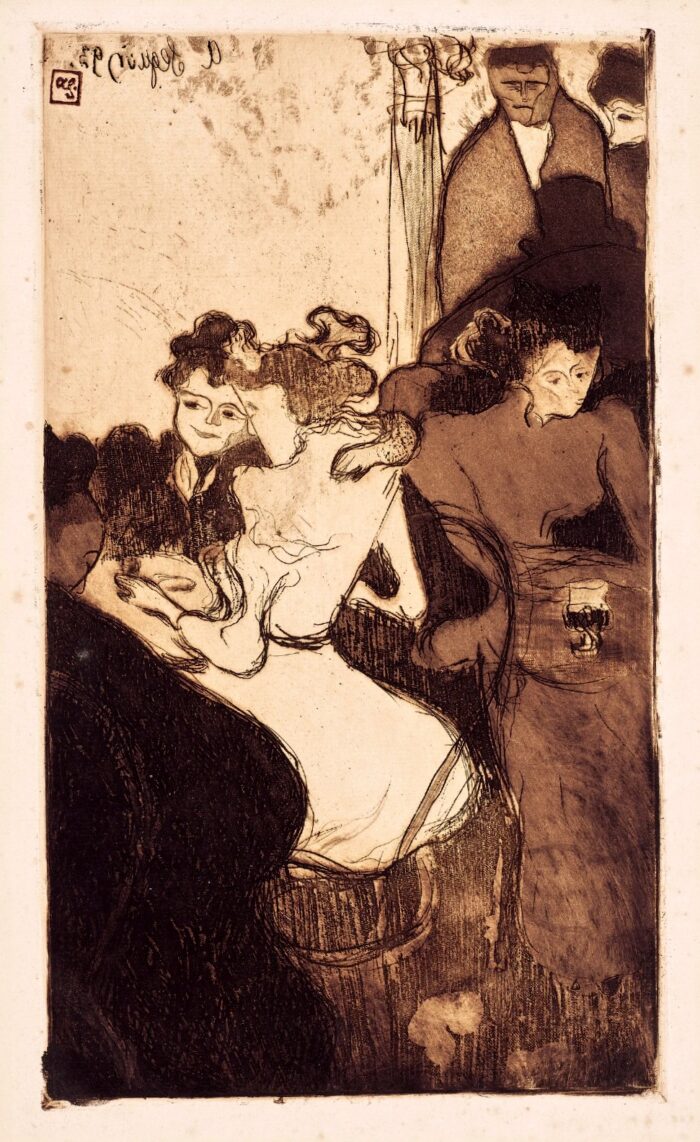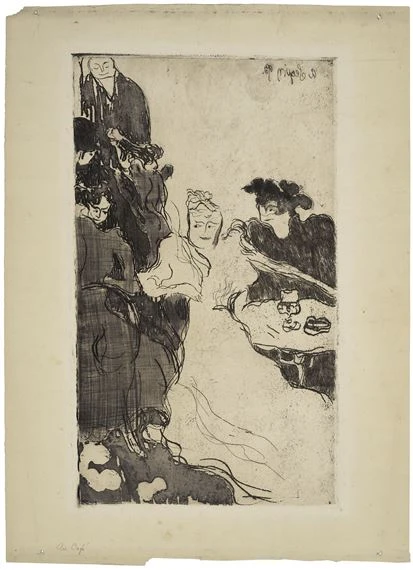
ARMAND SEGUIN
1869 Paris Chteauneuf-du-Faou 1904
Le Bar 1893
etching, aquatint, soft-ground etching, open bite, and roulette, printed in dark brown on cream-colored laid paper;
394 x 228mm (15 1/2 x 9 inches); sheet 498 x 336 mm (19 5/8 x 13 1/4 inches)
with the artists monogram stamp in upper left corner
Field/Strauss/Wagstaff 22 (this impression listed as B)
PROVENANCE
Pierre Fabius, Paris
Hill Stone, New York
private collection
EXHIBITED
The Prints of Armand Seguin 1869 1903, Davison Art Center, Wesleyan University, Middletown, CT, 1980 (catalogue with a full-page illustration on p. 20)
One of three impression mentioned in the catalogue raisonn. Another impression was in the collection of Sam Josefowitz.
The Caf and The Bar are singled out in the essay Richard Field wrote on Seguin as introduction to the 1980 exhibition at Wesleyan and which was based on the extensive research undertaken by his student Cynthia Strauss. Field writes that these two works must have been the etchings singled out by Camille Mauclair in his review of Seguins exhibition at Le Barc de Bouttevilles: Previously fantastic in his etchings, of which some recall but exaggerate the distortions of Toulouse-Lautrec, and other are like contorted, architectural landscapes pushed into obscurity, Monsieur Seguin does better by his paintings. [C.M, Chose dart in: Mercure de France, vol. 13, no. 63 (March 1895), p. 358] What appeared repugnant to Mauclair, however, was an apparent disregard for the beloved arabesque which Seguin now replaced with a brutalized treatment of form and space. So ostentatiously flaunted were his deformations, that these works anticipate the assault the assault on the materials of printmaking practiced by the German Expressionists during the following decade (p. 13).

